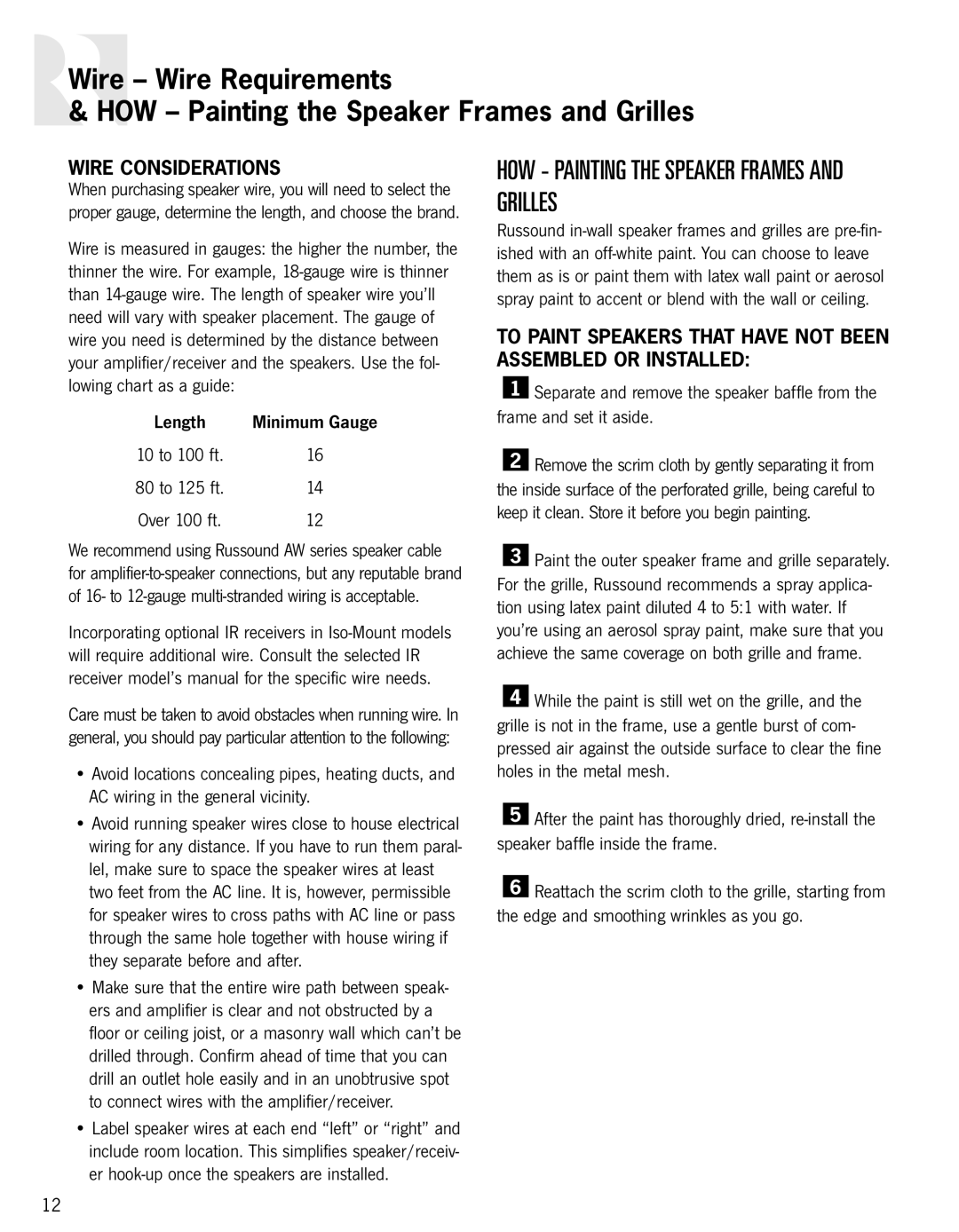In-Ceiling speaker specifications
Russound has long been synonymous with exceptional home audio solutions, and their in-ceiling speakers continue this tradition of quality and innovation. Designed to seamlessly blend into any room without sacrificing sound performance, these speakers are an optimal choice for those who want a clean aesthetic coupled with powerful sound delivery.At the heart of Russound's in-ceiling speakers is their advanced driver technology. Equipped with high-quality woofers and tweeters, these speakers are engineered to deliver rich, full-bodied sound that is both immersive and dynamic. Whether you are listening to music, watching movies, or enjoying a podcast, the precision of these drivers ensures that every note and voice is reproduced with clarity and depth.
One standout feature of Russound in-ceiling speakers is their versatility. They are designed for various applications, whether your aim is to create a multi-room audio setup or fill a single room with sound. Their low-profile design allows for easy installation and makes them virtually invisible once mounted, allowing your decor to take center stage while providing an exceptional auditory experience.
Additionally, these speakers are often equipped with pivoting tweeters. This technology allows the sound to be directed towards your listening area, further enhancing the acoustic experience. The adjustable sound dispersion ensures uniform coverage, providing a balanced audio experience throughout the space.
Russound’s in-ceiling speakers are also built with durability in mind. Their construction materials are chosen to withstand the rigors of installation within ceilings while minimizing any unwanted resonance or distortion. This attention to detail is evident in both their performance and longevity, making them a reliable choice for years of enjoyment.
Moreover, compatibility with a range of home audio systems enhances their functionality. Whether you're integrating them into a dedicated home theater system or a distributed audio setup, Russound speakers are designed to work well with the latest audio components, ensuring seamless connectivity and a hassle-free experience.
In summary, Russound in-ceiling speakers offer an excellent blend of aesthetic appeal, advanced technology, and versatility. They promise to transform any living space into an audio haven, where quality sound meets seamless design. For those seeking a sophisticated sound solution that complements their lifestyle, Russound's in-ceiling speakers are a formidable option.

